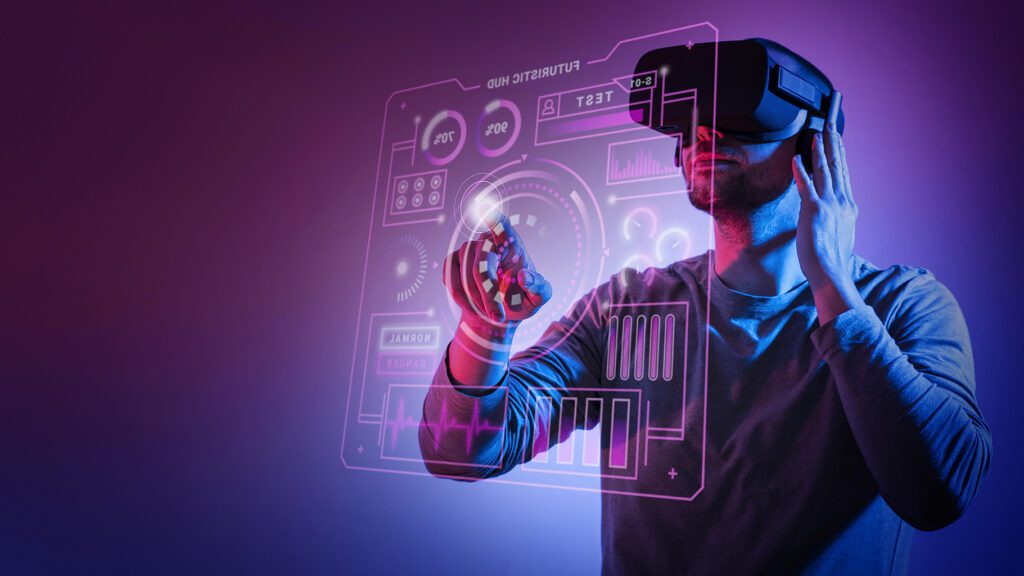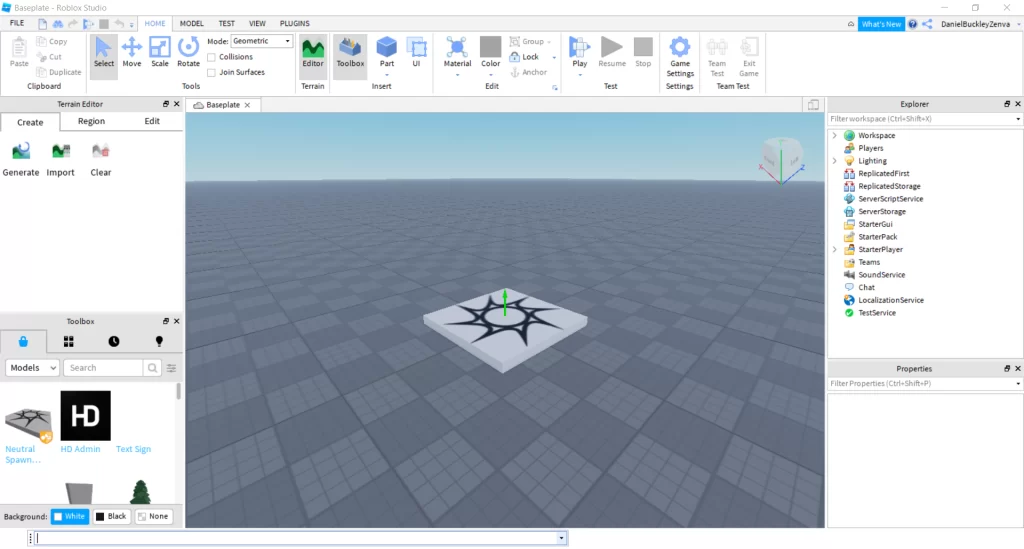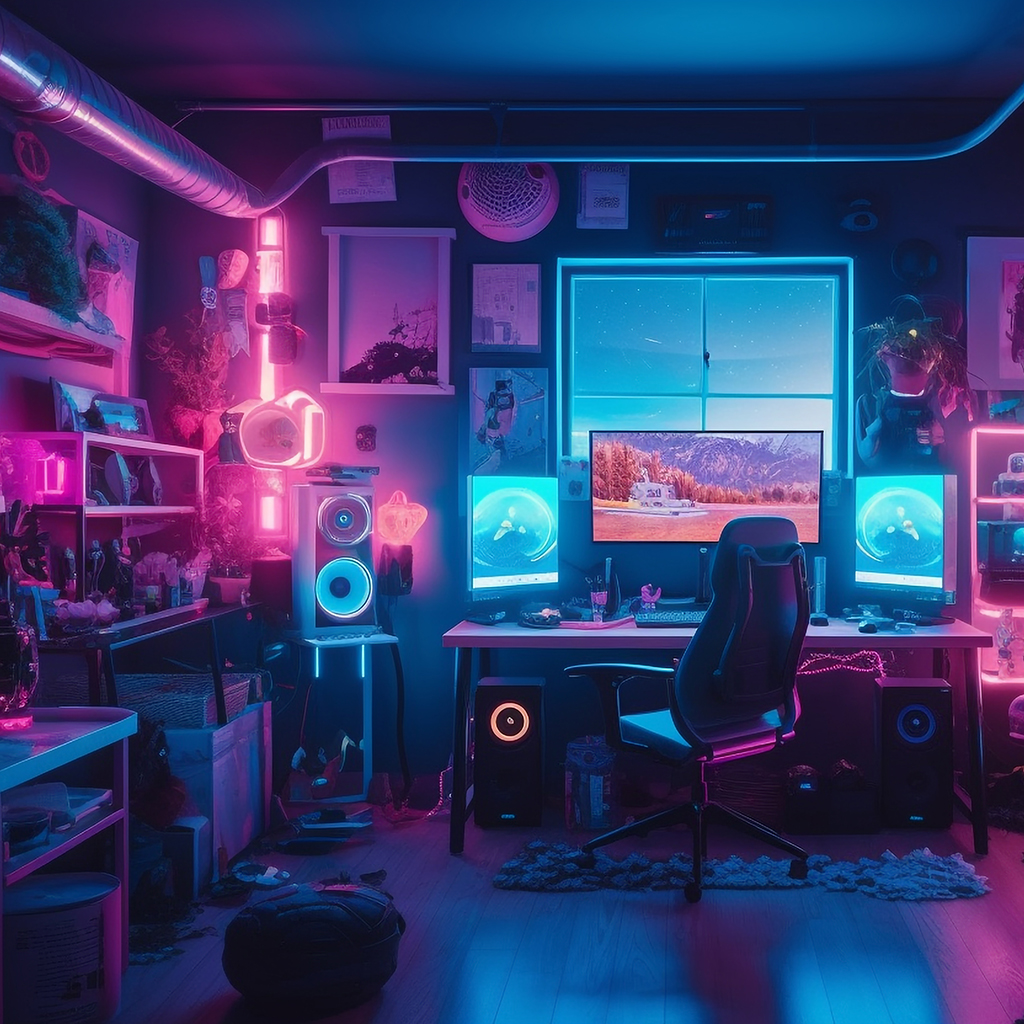Over the last few decades, we’ve been through different ages of the internet. At first, all we had were static web pages, but dynamic content, social media, and user-generated content soon followed.
Now, as we step into the era of Web 3.0, a digital expanse filled with decentralized, yet interconnected digital worlds as far as the eye can see, virtual world creators will soon be in high demand all over the world.
Throughout this article, we’ll dive head-first into the definition of a virtual world creator, its role in the upcoming metaverses, and the primary technologies behind these incredible, awe-inspiring worlds.
What is a virtual world creator?
The term “virtual world creator” refers to the professionals who envision and shape the very fabric of digital universes. They are the masterminds behind the design, direction, and construction of its elements, defining how they will interact with each other and pioneering the creation of intensely immersive, interactive realms.
One could even say that the digital space is their canvas, and code, design, innovation, and unfettered creativity are the colors on their palette.
Just a few years ago, virtual world creators mainly were seen working in traditional games. However, the landscape in the technology industry is changing rapidly, and metaverses are slowly becoming mainstream, and the demand for these professionals is set to grow over the years that follow.
But what exactly is the metaverse? In essence, it’s a shared virtual space where people interact, communicate, and live through digital representations of themselves (the aptly named avatars). It is also highly interconnected, with individuals able to move from one realm to another quickly – including ones in real life with the aid of augmented reality technology – and even shop for real goods like you would in person. What a time to be alive, isn’t it?

What are the key technologies virtual world creators use?
To breathe life into the digital worlds they envision, these professionals exploit the full potential of an array of technologies and tools. Of course, not every virtual world creator will be an expert on all technologies, but having some knowledge is a must! Let’s take a closer look into the tech and software in their toolkit:
Game engines and development platforms
At the core of almost every virtual world lies a powerful software: the game engine, which provides the essential tools and abstractions for designing, developing, and running video games and virtual worlds. It serves as the cornerstone for many projects, offering valuable features like graphical renders, physics simulations, handling input devices, enabling game logic, and working with audio files.
In other words, they streamline the development process by providing pre-built components (like those mentioned above), allowing developers to focus on creating gameplay, content, and immersive worlds without having to reinvent the underlying technical infrastructure.
Popular game engines and programming language pairs include Unity (C#), Unreal Engine (C++ or Blueprint, their visual programming language), CryEngine (C++), or Godot (C++ or GDScript on top of being completely free and open-source).
It’s also possible for virtual world creators to design and craft their realms on proprietary platforms like Roblox (Lua), Minecraft (Java/Kotlin), and The Sandbox (which doesn’t require you to code), which further reduces the need to create even more underlying infrastructure.

3D modeling and animation tools
As worlds in the metaverse are designed to be deeply immersive experiences, you will need high-quality 3D models to go with them. Creating them is no easy task, with very complex projects often requiring more than 100 hours of work from start to finish.
Tools like Blender, Maya, ZBrush, and the Adobe Substance suite allow professionals to create, sculpt, and texture 3D models and bring them to life through rigging and animation.
There is one thing you must always keep in mind when designing virtual worlds: the environment and its objects are critical to ensure high levels of immersion and a cohesive overall experience.
Extended reality technologies
They encompass augmented reality (AR), virtual reality (VR), and mixed reality (MR). In the context of virtual worlds, these technologies enable users to transcend the limitations of the physical world and immerse themselves in digital environments.
As for their differences, well, AR overlays digital elements on top of the real world, enhancing it with information and virtual objects, which can be very handy. VR, on the other hand, transports users to digitally constructed environments, cutting off their physical surroundings and creating an immersive experience that confuses the senses.
As you might imagine, MR merges aspects of both technologies, allowing users to interact with digital objects while fully aware of their immediate environment.
Internet of Things, or IoT
This concept helps virtual world creators further bridge the gap between the physical and digital realms.
How so? Imagine a virtual world where your smart home appliances integrate with the environment. Your lights, thermostat, and even your coffee maker become interactive elements in the virtual space. As you make your way through the digital realm, you can interact with these physical devices just like you would in the real world.
And let’s not forget the role of wearable devices, which add another layer of connectivity. Virtual world developers can extract the data from smartwatches, fitness trackers, and even smart glasses to enhance the user experience – things like health metrics influencing in-game events and smart glasses overlaying digital information onto the real world.
Artificial Intelligence (AI)
At its core, AI refers to the development of computer systems and algorithms that can perform tasks that typically require human intelligence. In some cases, like creativity, captchas, and analyzing massive amounts of data, they vastly outperform us – and the progress pace has been picking up speed lately.
In the context of virtual world creation, AI will be a key technology moving forward. AI algorithms have the remarkable ability to generate vast amounts of content procedurally, and developers could harness this potential to craft entire landscapes, cities, and even ecosystems based on a small set of rules. This has the potential to save immense amounts of time and effort while ensuring diversity and realism.
It already sees use in lifelike conversations – think of ChatGPT, Bard, Claude, and many other conversational AIs, which are powered by natural language processing and large language models.
Shortly, we’ll be able to interact with procedurally generated NPCs and even digital representations of celebrities that can hold meaningful conversations with players. Virtual world creators might even be able to prompt high-quality artwork, textures, and other game assets to a well-trained AI model, further streamlining the development process.
It could even be utilized to autonomously generate branching storylines for suitable games, keeping users engaged through a swathe of unique, personalized adventures!

Machine learning
This subset of artificial intelligence refers to the ability of computer systems to improve and adapt their performance through experience and repetition rather than being programmed to do so.
In other words, machine learning algorithms can analyze vast amounts of data generated by users and gather valuable insights to personalize content, predict user actions, and optimize the virtual environment in real time. This adds yet another layer of intelligence to virtual worlds, making them feel extremely dynamic and lifelike even when compared to the newest AAA games.
Blockchains and decentralization
Blockchains are essentially decentralized and immutable ledgers that record transactions across a network of computers. Each transaction is a “block”, which is added to a “chain” one after another, and they cannot be modified once in the blockchain. With this, no single entity has total control over the network, bringing unprecedented levels of security and transparency.
The value of such technologies in virtual worlds extends far beyond the elimination of intermediaries like banks or central authorities. In some metaverses, like the Sandbox and Decentraland, each parcel of land is a unique, tradable non-fungible token (NFT) on the Ethereum network.
This means that whatever assets you own in these worlds, be they virtual property, rare collectibles, exclusive skins and avatars, or even art, can be bought, sold, and exchanged independently with other players. In other words, blockchains enhance the sense of ownership and rarity, especially within metaverses.

Conclusion
All in all, virtual world creators stand as the designers and architects of our wildest digital dreams. These professionals, once associated only with the world of gaming, now find themselves leading the new age of the internet – which includes concepts like Web 3.0 and the metaverse.
Armed with a powerful arsenal of technologies comprising game engines (or development platforms), 3D modeling tools, XR devices, IoT connectivity, AI, machine learning, and blockchains, virtual world creators can craft immersive, interactive, and highly interconnected virtual worlds that blur the lines between what is real and what is not.
From simple social experiences, like hanging out at a virtual space station while chatting and playing party games with friends, to personalized gameplay experiences in fantastic, procedurally generated realms that defy reality, the potential of these technologies is almost limitless. It is likely to redefine how we live, play, and connect to other individuals in the near future.
At Main Leaf, we understand how virtual worlds and metaverses can offer unprecedented experiences that will amaze even the most skeptical person. Our team of 70+ experts is passionate about all things game development – including projects in the metaverse – and we would love to help you achieve your dreams.
Whether you’re envisioning the next generation of virtual worlds, seeking tailored, high-quality assets to populate your games or have an incredible idea for a project, we’re here to turn whatever’s in your mind into digital reality.
All you need to get started with Main Leaf is to contact us below! We’ll get in touch within 24 hours.

